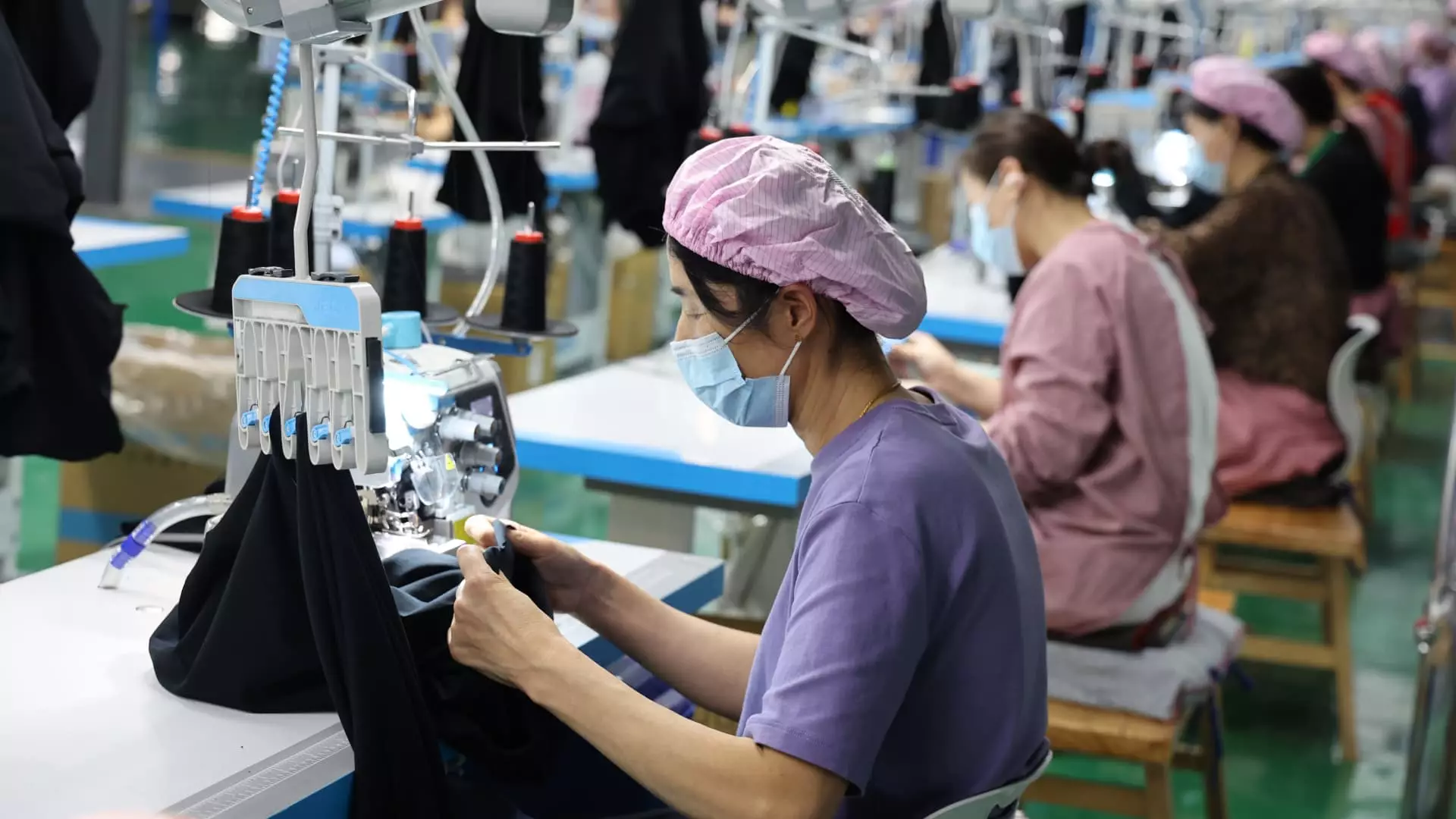The recent surge in U.S. tariffs has ignited a wave of uncertainty within the Chinese manufacturing sector, leading to companies retreating from traditional markets and prompting shifts in production strategies. These tariffs, which have more than doubled and sparked retaliatory measures from China, have left factories across the country grappling with order cancellations and furloughs. A senior partner at Tidalwave Solutions, Cameron Johnson, voiced concerns about the rapid drop in production, especially in key hubs like Yiwu and Dongguan, where companies are proactively sending employees home while hoping for a reversal of tariff pressures.
The ramifications of these tariffs are extensive. Estimates suggest that between 10 to 20 million workers—about 2-4% of China’s urban workforce—are reliant on U.S. export businesses. The stark reality is difficult to digest: for small manufacturers, even a slight drop in order volumes can precipitate financial ruin. The resilience of these businesses is now under immense scrutiny, as many find themselves caught on the tightrope between necessity and survival. The trade climate, once flourishing, is now fraught with anxiety and potential distress.
A Disruption Worse than Covid-19?
Ash Monga, founder and CEO of Guangzhou-based Imex Sourcing Services, characterized the impact of the tariff hike as “way bigger” than the turmoil triggered by the Covid-19 pandemic. This statement shouldn’t be overlooked; it reflects the profound disruption small businesses in China are facing as they struggle to adapt to an unyielding economic landscape. The instinctive reaction of pivoting towards alternative markets is commendable, yet the speed and scale of these adaptations may not be sufficient.
Small businesses, often operating on dwindling margins and limited resources, harbor a growing fear of existential crisis. Their solutions are predictably reactive, such as Monga’s “Tariff Help” initiative aimed at finding suppliers outside of China. However, one must question the sustainability of such measures. Seeking out new market channels and alternative suppliers may be an immediate response, but will it truly shield these businesses from an array of market disruptions?
Embracing Domestic Opportunities: An Unlikely Lifeline
To counterbalance the losses from U.S. markets, companies are scrambling to explore domestic strategies. Woodswool, a maker of athletic wear, has ventured into livestreaming, a popular sales method among younger Chinese consumers. Within just a week, the company achieved modest sales, yet it’s crucial to assess whether this agile response can compensate for the substantial losses from their traditional American clientele.
Prominent tech companies are at the forefront of this pivot, introducing initiatives to assist exporters in redirecting their focus towards domestic sales. Baidu’s financial backing and JD.com’s commitment to purchasing goods initially meant for export hints at a state-backed effort to stabilize the economy. Yet, one must remain skeptical; this influx of capital—$27.22 billion—amounts to only a fraction of the total goods exported by China to the U.S. How effectively can these initiatives transform the economic landscape in the long term?
Going Global: China’s New Trade Routes
With the U.S. market looking increasingly precarious, Chinese companies are increasingly eyeing alternative trade routes and partner nations. As the tide shifts, Asian neighbors like India and emerging markets in Latin America are becoming attractive options. One example is Liu Xu, who operates an e-commerce business targeting Brazil—a market increasingly crucial as China diversifies its export strategy. The worrisome question remains: can these burgeoning avenues offer stability comparable to what once was a lucrative relationship with the U.S.?
Not only are companies searching for new partners and markets, but there is also an underlying sentiment of fatigue within the Chinese manufacturing sector. Ashley Dudarenok, a consultant specializing in marketing, highlights the growing anxiety as manufacturers pursue outreach on social media to stimulate consumer support. The enthusiasm is waning, as more companies realize that adjusting their products for different markets—and indeed, different consumers—may not yield the desired results.
The Uncertain Future of Global Trade
The reality is sobering: companies are navigating a treacherous marketplace filled with uncertainty and change. The tariffs are just one piece of a larger puzzle, and many manufacturers are discovering that traditional, U.S.-targeted models may not be applicable in the shifting market landscape. What remains clearer, however, is that innovation, creativity, and agility are vital traits in this swirling cyclone of economic change.
Ultimately, the future remains uncertain. The prospect of tariffs may loom large, but companies are left to decipher the complexities of international relations and their effects on trade. As the struggle to adapt continues, it is the determination of these businesses and their willingness to explore new possibilities that will shape the trajectory of Chinese manufacturing for years to come.

